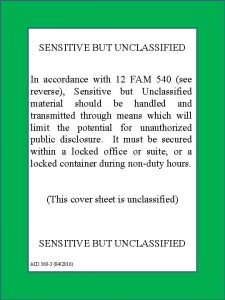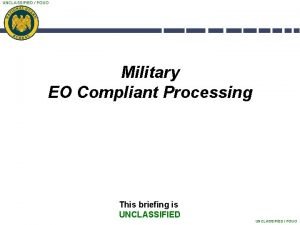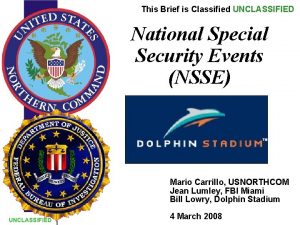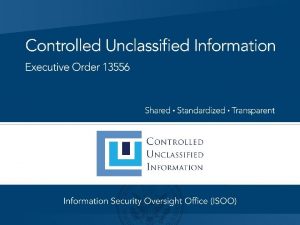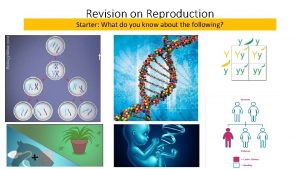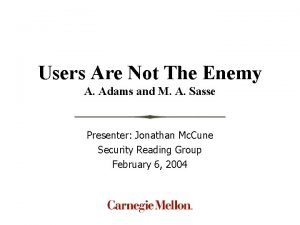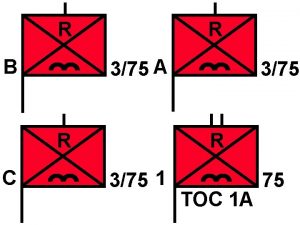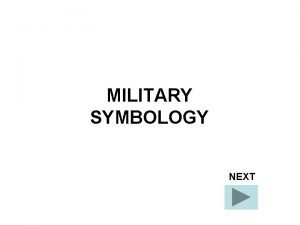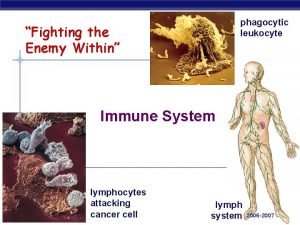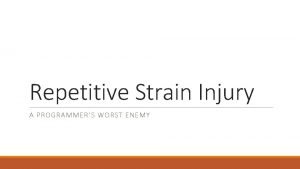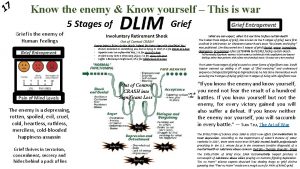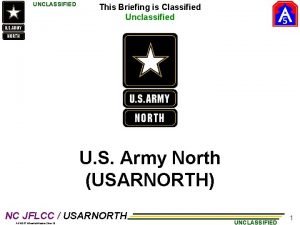UNCLASSIFIED If you know the enemy and know















































- Slides: 47

UNCLASSIFIED “If you know the enemy and know yourself, you need not fear the result of a hundred battles” (source EA) Sun Tzu 500 BC Adversarial Machine Learning: Concepts, Techniques and Challenges Olivier de Vel, Ph. D Principal Scientist CEWD, DST Group

UNCLASSIFIED Strategic Context • Defence applications of AI and ML will become increasingly common. Examples include: Ø Ø Ø Predictive platform maintenance Predictive battlefield tracking Autonomous cyber operations Software vulnerability discovery UAV swarm coordination etc.

UNCLASSIFIED Strategic Context • Defence applications of AI and ML will become increasingly common. • AI/ML increases the attack surface of the applications. Why does it matter? Why is it important? q Security & Safety – algorithms can make mistakes & report incorrect results; currently much is broken… q Poor understanding of failure modes, robustness etc.

UNCLASSIFIED Strategic Context • Defence applications of AI and ML will become increasingly common. • AI/ML increases the attack surface of the applications. • New ML security challenges include: q q Robust ML attacks and defences Verification and validation of ML algorithms ML supply chains (algorithms, models, data, APIs) End-to-end ML security, Security of system-of-ML-systems

UNCLASSIFIED Security Context Example: Security issues ‘at the core’ and ‘on the edge’ (source: J. Clements CAAD@DEFCON 26 -2018)

UNCLASSIFIED Humans are Vulnerable to Adversarial Examples e. g. Human perception attacks Attack on human vision ‘cat’ (source: Elsayed et al, ar. Xiv: 1802. 08195 v 3)

UNCLASSIFIED Adversarial ML – Example of Digital Attack 0. 6 ect r r co nce n i ort nfide p e r co n h a g c i ier ith h f i w ss cla sults re 0. 5 0. 4 0. 3 0. 2 0. 1 0 Washer 1 0 Safe Washer 0 Safe Loudspeaker (source Kurakin et al, 2016)

UNCLASSIFIED (source Biggio and Roli, ar. Xiv: 1712. 03141 v 2) A Brief History of Adv. ML/Adv. DL A. Wald (1945) – loss, cost, risk functions ‘adversarial learning’ concept introduced ‘AML’ concept introduced attacks against SVMs ‘small imperceptible perturbations’ against DNNs Han et al “Reinforcement learning for autonomous defence in SDNs” Game. Sec 2018 We do this!

UNCLASSIFIED Recap of ML (supervised) (source “Survey on Security Threats and Defensive Techniques of Machine Learning”, Qiu et al, 2018)

UNCLASSIFIED Recap of ML (supervised) Goal of learning: find a model which delivers good generalisation performance over an underlying distribution of the data. Training: Obtain approx. of f*, the parametric classifier f(θ), by finding parameters θ such that f(θ) fits the training data. Choice of the family f(. ) is crucial. If risk is continuous and differentiable then we can use gradient descent. (source Madry, 2018) but often very non-convex…

UNCLASSIFIED Know Your Adversary • Adversary’s Goals …to reduce confidence in a system’s capability …to cause a security incident/violation e. g. Availability attacks: e. g. Do. S attacks due to misclassifications e. g. Confidentiality attacks: e. g. queries to reveal information (source Biggio, 2018)

UNCLASSIFIED Know Your Adversary • Adversary’s knowledge black-box attack grey-box attack Ker Def ckh enc off ’s e P rinc iple white-box attack Training data, defender cost, feature set, ML algorithm, architecture, hyperparameters, outputs (labels or probabilities) etc. (source Team Panda, 2018)

UNCLASSIFIED Know Your Adversary • Adversary’s capabilities (source “Survey on Security Threats and Defensive Techniques of Machine Learning”, Qiu et al, 2018)

UNCLASSIFIED Know Your Adversary • Adversary’s capabilities Error-generic Poisoning attack Evasion attack (e. g. adversarial examples) (source Team Panda, 2018) Error-specific

UNCLASSIFIED Poisoning the Training Set Injecting a poisoned data point: clean label attack (source Biggio and Roli, ar. Xiv: 1712. 03141 v 2)

UNCLASSIFIED Poisoning the Training Set Injecting poisoned data points by flipping a fraction of class labels: increasing # of class label flips test error Generally by means of bi-level max-min optimisation: maximise the attacker’s objective on (untainted) test set Learn the classifier on the poisoned data p (source Biggio and Roli, ar. Xiv: 1712. 03141 v 2)

UNCLASSIFIED Summary Taxonomy of ML Security Threats Poisoning attack Influence training data to mislead learning Evasion attack Attack test time data to evade detection Results in poor decisions on attack data (FN ) Do. S attacks against legitimate data (FP ) Adversary obtains sensitive and confidential data Cause specific errors Maximise test error rate Timing attack Attack at certain times to e. g. minimise detection prob. (source “Survey on Security Threats and Defensive Techniques of Machine Learning”, Qiu et al, 2018)

UNCLASSIFIED Attack Strategy – Adversarial Examples: Formal ‘Perturbation’ Problem Statement But… attacker needs to know model f (white-box) and… optimisation is non-convex Ǝ many attack scenarios for neural networks e. g. , L-BFGS, FGSM, C&W, JSMA etc. (source Papernot et al, 2018)

UNCLASSIFIED Attack Strategy - Examples ‘additive pixel-wise noise’ FGSMFGSM ‘rotation attack’

UNCLASSIFIED Attack Strategy – Summary Attack Types We do this! (source “Survey on Security Threats and Defensive Techniques of Machine Learning”, Qiu et al, 2018)

UNCLASSIFIED Attack Strategy – Black-box Attacks BB attacks are possible with query access: Query-based Attacks • Finite difference gradient estimation • Query reduced gradient estimation Zero-Query Attacks • Random perturbation • Difference of means • Transferability-based attacks (source “Secure Learning in Adversarial Deep Neural Networks”, B. Li, 2018)

UNCLASSIFIED Attack Strategy – Using Transferability for Blackbox Attacks Adversary Model A (White-Box Model) Adversarial Examples transfer to Model B (Black-Box System) Samples crafted to mislead a model A are likely to mislead a model B (source “Secure Learning in Adversarial Deep Neural Networks”, B. Li, 2018)

UNCLASSIFIED Defence Strategy (source “Survey on Security Threats and Defensive Techniques of Machine Learning”, Qiu et al, 2018)

UNCLASSIFIED Defence Strategies - Examples We do this! (source “Survey on Security Threats and Defensive Techniques of Machine Learning”, Qiu et al, 2018)

UNCLASSIFIED Defence Strategy: Adversarial Training Goal of adversarial examples: § alter the data distribution of the testing data, resulting in a deviation from the training data manifold and thus creating test-time errors. Adversarial Training Intuition: § Inject adversarial examples during training with correct labels. Goal: § reduce the test error rate and thus improve model generalisation outside the training manifold. This will lead to a more robust model and forms the basis for model-based optimisation.

UNCLASSIFIED Defence Strategy: Adversarial Training Now… two ‘players’ – attacker and defender… (Madry et al 2018) Then, as before, the defender attempts to minimise the classifier loss and seeks The outer minimisation portion attempts to mitigate loss due to the perturbation by optimising the classifier parameters θ (source Papernot, 2018)

UNCLASSIFIED Defence Strategy: Adversarial Training This mini-max problem corresponds to a saddle point optimisation problem! rm o n ll a b (source Papernot, 2018)

UNCLASSIFIED Defence Strategy – It’s an Arms Race Currently much is broken and not well understood… Most defensive techniques have been broken (including ensemble methods) Example - on the issue of (deep) neural network classifier linearity: • Szegedy (2013) suggested that adversarial examples can be explained due to the excessive non-linearity of NN decision boundary. • Goodfellow (2014) concluded that adversarial examples can be explained as a result of too much linearity. • Moosavi-Dezfooli et al (2018) suggested that adversarial examples could be due to excessive curvature regions on the decision boundary. (source Fawzi et al, 2017)

UNCLASSIFIED Adversarial Robustness We do this! thm i r o g L al M the s e i f sti u b o r • From a robust statistics perspective i. e. , how an algorithm behaves under a small perturbation of the s of s e n t statistics model (e. g. , influence function approach) bus o r e th e orithm s e r alg su mea the ML • From a stability perspective i. e. , how the output function f(. ) changes under a specific perturbation such as deleting one sample from training set.

UNCLASSIFIED Automated Decision-making: Using RL We do this! Can ov D be fr ecis ame d ion Pro as a ces s (M DP) Mar k reward Environment that maximises the expected total reward state action (source Levine “CS-294 Deep RL”)

UNCLASSIFIED Anatomy of an RL Algorithm - MDP which, more generally, can be unrolled recursively: (on-policy Bellman expectation equation)

UNCLASSIFIED The Simplest RL Algorithm: Q-learning estimate of optimal future Q value old Q value (source R. Sutton NIPS 2015)

UNCLASSIFIED RL Algorithms

UNCLASSIFIED Taxonomy of RL Algorithms ‘on-policy’ ‘off-policy’ (source Open. AI Spinning. Up)

UNCLASSIFIED Known Problems with RL Algorithms • The Exploration-Exploitation Dilemma • The Deadly Triad Issue – the risk of divergence arises when we combine all three of the following: 1. Function approximation 2. Bootstrapping bias – learning value estimates from other estimates 3. Off-policy learning – learning about a policy from data not due to that policy (source R. Sutton NIPS 2015)

UNCLASSIFIED Automated Decision-making: Using Deep RL reward Environment state action (source Levine “CS-294 Deep RL”)

UNCLASSIFIED Deep Q-Learning: Game Architecture environment

UNCLASSIFIED Deep Q-Learning (DQN) could be a: • DNN • decision tree • etc. (source: Salakhutdinov 2017)

UNCLASSIFIED Deep Q-Learning (DQN) target value

UNCLASSIFIED What Can RL (and DNNs) Do Well Now? • Acquires a high degree of proficiency in domains governed by simple, known rules • Learns simple skills with raw sensory inputs, given enough experience • Learns from imitating enough humanprovided expert behaviour (source Levine “CS-294 Deep RL”)

UNCLASSIFIED RL - What has Proven Challenging So Far? • Humans are able to learn incredibly quickly § Deep RL methods are usually (very) slow • Human can re-use past knowledge § Transfer learning in deep RL not well understood • Not clear what the reward function should be • Not clear what the role of prediction should be e. g. , predict the consequences of an action? predict total reward from any state? (source Levine “CS-294 Deep RL”)

UNCLASSIFIED Attacks against Deep RL: Adversarial Perturbation § Manipulate states or state channels § Manipulate rewards § Choose timing (perturbing subset of states/rewards) Environment We do this! Example: add “invisible” perturbations to the state channel (e. g. readings) so that a different action is taken e. g. take ‘worst possible’ action

UNCLASSIFIED Example Deep RL Attack – DDQN Evasion Attack attacker generates FP readings on adjacent nodes critical server node attacker-compromised node isolated node migration node Attacker no longer able to propagate Critical server saved by defender but… mission severely compromised

UNCLASSIFIED AML Challenges • A classifier that is robust against many (weak) perturbations, may not be good at finding stronger (worst-case) perturbations. This could be catastrophic in some domains. • Robustness comes at a cost – need better adversarial training (eg use GANs) ? need more training data? more training time? more network capacity? etc. • Is there a trade-off between classifier accuracy (CA) and adversarial accuracy (AA)? Note: humans have both high CA and AA…

UNCLASSIFIED AML Challenges (cont) • Attacks are often transferable between different architectures and different ML methods. Why? • Defences don’t generalise well out of the norm ball. Consider other attack models. Understand the complexity of the data manifold. • Certificates of robustness – e. g. , produce models with provable guarantees, verification of neural networks etc. . However, guarantees may not scale well due to blind spots in high dimensionality and limited training data. • Obtain more knowledge about the learning task § Properties of the different data types (eg spatial consistency) § Properties of the different learning algorithms

UNCLASSIFIED

2019 Cyber Security Summer School, Adelaide Day 2 - Friday 22 March 2019 Proudly hosted and sponsored by 9: 00 am - 9: 15 am Rachael Falk, Cybersecurity CRC Research with impact in the cyber ecosystem 9: 15 am - 10: 15 am Keynote: Prof Wenke Lee, Georgia Tech User interface and security: Two sides of the story 10: 15 am - 10: 45 am - 11: 00 am – 12: 00 pm Prof. Ryan Ko, University of Queensland Returning data control to users Break Keynote 5: Prof Vitaly Shmatikov, Cornell Tech What are machine learning models hiding? 12: 00 pm - 12: 45 pm Dr. Olivier de Vel, Defence Science & Technology Group Adversarial Machine Learning 12: 45 pm - 1: 45 pm Lunch 1: 45 pm - 2: 15 pm Prof. Sanjay Jha, University of New South Wales Security challenges in internet of things 2: 15 pm - 3: 15 pm Panel Discussion: Prof. Ali Babar – University of Adelaide Prof. RK Shyamasundar – IIT-Bombay Dr. Jackie Craig – Independent Consultant Prof. Vallipuram Muthukkumarasamy – University of Griffith Prof. Anton Van Den Hengel – Australian Institute for Machine Learning 3: 15 pm - 3: 30 pm - 4: 00 pm - 4: 30 pm Break Prof. Willy Susilo, University of Wollongong Securing Cloud Storage: Challenge and Research Directions Dr. Jin-Song Dong, Griffith University Formal analysis in security
 We are not ignorant of the devices
We are not ignorant of the devices Unclassified position
Unclassified position Sbu/noforn
Sbu/noforn Unclassified
Unclassified Unclassified fouo
Unclassified fouo Financial position account form
Financial position account form Cui banner marking
Cui banner marking Unclassified brief
Unclassified brief Nato unclassified
Nato unclassified Ngr 600-22
Ngr 600-22 National special security event list
National special security event list Unclassified//fouo
Unclassified//fouo Nato unclassified
Nato unclassified Cui banner marking
Cui banner marking Knowit it
Knowit it You're a poet and you don't know it
You're a poet and you don't know it If you're blue and don't know where to go
If you're blue and don't know where to go The devil comes to steal kill and destroy niv
The devil comes to steal kill and destroy niv So you think you know minecraft
So you think you know minecraft Being asexual
Being asexual Do you know who you are
Do you know who you are I will follow you wherever he may go
I will follow you wherever he may go Your dreams stay big and your worries stay small
Your dreams stay big and your worries stay small Know history know self
Know history know self Do deep generative models know what they don’t know?
Do deep generative models know what they don’t know? God of angel armies
God of angel armies An opponent or enemy
An opponent or enemy Overlay symbols
Overlay symbols Yahoomail7
Yahoomail7 Paul bacon waseda
Paul bacon waseda Remains simon armitage text
Remains simon armitage text Military classes of supply
Military classes of supply Glittering generalities example sentence
Glittering generalities example sentence Simplification propaganda
Simplification propaganda Enemy mechanized infantry section symbol
Enemy mechanized infantry section symbol Enemy corner seating arrangement
Enemy corner seating arrangement Good to great chapter 1
Good to great chapter 1 Users are not the enemy
Users are not the enemy Six section battle drills uk
Six section battle drills uk Enemy of luke skywalker
Enemy of luke skywalker Animal farm propaganda poster
Animal farm propaganda poster Holmes' arch enemy is _____.
Holmes' arch enemy is _____. My enemy y y y
My enemy y y y The greatest happiness is to scatter your enemy
The greatest happiness is to scatter your enemy Sex is god's greatest enemy
Sex is god's greatest enemy Enemy of the state strain
Enemy of the state strain John piper love your enemies
John piper love your enemies The unseen enemy thematic concept
The unseen enemy thematic concept


